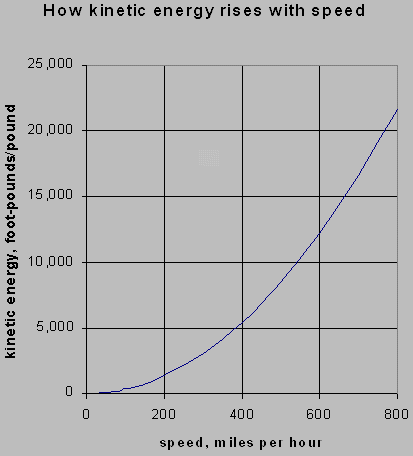Speed
Today, how fast dare we go? The University of Houston's College of Engineering presents this series about the machines that make our civilization run, and the people whose ingenuity created them.
In another program, I talk about how the sound barrier was recently broken on land. Yet the 1999 Indy 500 winner averaged only 153 miles an hour, about one fifth the speed of sound. Indy cars still reach less than thirty percent of Mach 1 on straight runs.
So I'm struck by the fact that real land transport -- even car racing and high-speed rail service -- seldom gets beyond 150 or 200 miles an hour. A Stanley Steamer reached 150 miles an hour way back in 1907, and this year's Indy 500 is still turning up that same speed. The popularity of the Indy 500 is falling. The race looks just the same year after year, and, despite precautions, several people were almost killed this year.
Behind all this is a simple law of physics: Kinetic energy increases as the square of velocity. If you've ever suffered a car accident at even twenty-five miles an hour, you've been through a horrific experience. At top racecar speeds, the violence of the collision is a hundred times worse. At the speed of sound, a thousand times!
Take those road turnouts on highways coming out of the mountains -- those spurs that go sharply uphill to catch a truck if its brakes fail. Now ask how far uphill you'd coast: At 25 miles an hour, you'd stop after you'd risen twenty-one feet. At two hundred miles an hour, the road would have to rise a quarter of a mile. But at the speed of sound, you could coast from sea-level to the top of Mt. McKinley!
Yet the increase of damage with speed is only one limitation. There's also the driver's ability to respond. At the speed of sound (five seconds per mile), the best driver will go a long city block in the time it takes to perceive danger and react. No one even thinks about racing at such a speed. Indy 500 drivers take the better part of a football field to react. Yet they constantly come within a few feet of each other, and accidents are frequent. On the highway, you and I need at least seventy feet just to react. Small wonder that highway deaths rise when we lift speed limits.
The reaction-time problem can be removed by giving control over to computers. That's already being done in airplanes and high-speed rail systems, though not yet in cars. But the sharp increase of damage with speed remains. A pothole or a bent rail, a blowout or a rock rolling on to the road, will keep making high speeds unattainable on land. Our grandchildren aren't apt to see ground travel above two hundred miles an hour in their lifetimes.
Of course the terrible lure of speed reaches the young in particular. I've never again driven as fast as I drove back in 1946. English poet Edward Young caught the sense of it over two centuries ago -- long before automobiles -- when he wrote,
Be wise with speed;
A fool at forty is a fool indeed.
And, in the matter of speed, physics will make us wise if we don't choose to be so.
I'm John Lienhard, at the University of Houston, where we're interested in the way inventive minds work.
(Theme music)
